Things to do in Singapore
Singapore is a vibrant city that offers something for every kind of traveller. History buffs can explore the heritage-rich streets of Kampong Gelam or admire the timeless beauty of Thian Hock Keng Temple, while the colourful enclaves of Chinatown and Little India unlock Singapore's multicultural roots through unforgettable sights, sounds and flavours.
Nature lovers will find respite in the lush surroundings of the Singapore Botanic Gardens, a UNESCO World Heritage Site, or in the tranquility of Bukit Timah Nature Reserve, home to one of the country's last remaining tracts of primary rainforest.
For families, the renowned Singapore Zoo provides a memorable day out, featuring open-concept habitats and a wide array of wildlife from around the globe. Other highlights include Sentosa Island, known for its sandy beaches, theme parks, and recreational attractions, as well as the newly opened Bird Paradise at the Mandai Wildlife Reserve. The Chinese and Japanese Gardens are currently being redeveloped as part of the expansive Jurong Lake Gardens project.
Art and design enthusiasts will appreciate the Red Dot Design Museum, which showcases innovative products and creative design solutions. Contemporary Southeast Asian art is celebrated at the Singapore Art Museum, which is currently undergoing redevelopment and presenting exhibitions at alternative venues across the city.
To simplify travel around the city, the Singapore Tourist Pass offers unlimited rides on public buses and MRT trains for one, two, or three days. The pass is available at most major MRT stations and selected outlets.
Raffles Hotel
Raffles Hotel is a grand Victorian icon in Singapore's colonial district, famed for its timeless elegance and storied guests such as Hemingway, Chaplin, and Kipling. Visitors can s…
Raffles Hotel
Raffles Hotel is a grand Victorian icon in Singapore's colonial district, famed for its timeless elegance and storied guests such as Hemingway, Chaplin, and Kipling. Visitors can sip a classic Singapore Sling at the Long Bar beneath gently whirring fans, or enjoy afternoon tea at the beloved Tiffin Room. The Bar & Billiard Room offers laid-back charm with gin, tonic, and the occasional game of snooker. With around 15 restaurants and bars, plus boutiques and cultural touches, Raffles is more than a hotel; it's an experience. History, hospitality and heritage come together here in one unforgettable stay.
Website www.raffleshotel.com
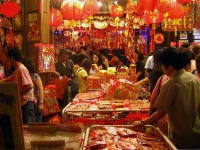
Chinatown
Tucked between Singapore's gleaming skyline and its dynamic financial district, Chinatown offers a richly layered glimpse into the city's cultural heart. Winding streets and narrow…
Chinatown
Tucked between Singapore's gleaming skyline and its dynamic financial district, Chinatown offers a richly layered glimpse into the city's cultural heart. Winding streets and narrow alleyways echo the traditions brought by Chinese immigrants from Guangdong and Fujian in the early 19th century. Here, the ornate Thian Hock Keng Temple stands as a quiet tribute to the sea goddess Mazu, while the Yixing Xuan Teahouse invites visitors to slow down and savour the ritual of Chinese tea-making. In Tanjong Pagar, traditional crafts such as painted masks and paper umbrellas line the shophouses, and nearby stalls brim with kimonos, pottery and keepsakes. Though modern developments have changed its face, Chinatown continues to honour its roots, offering a welcoming window into Singapore's enduring heritage.
Little India
Little India is a lively, colourful neighbourhood where the rich heritage of Indian settlers thrives. Since the early 19th century, these settlers have shaped the area with their s…
Little India
Little India is a lively, colourful neighbourhood where the rich heritage of Indian settlers thrives. Since the early 19th century, these settlers have shaped the area with their spices, silks and vibrant culture. Today, it's a bustling hub filled with temples, restaurants and shops offering everything from henna tattoos to bargains. The food here is a must-try, and is affordable, flavourful and served in generous portions. Little India truly comes alive during the Hindu Festival of Lights, Deepavali, when the streets sparkle with beautiful lights, adding to the charm of this cultural gem.
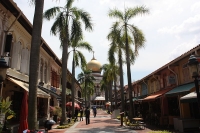
Kampong Gelam and Arab Street
Kampong Gelam, named after the Gelam tree that once grew in abundance here, was set aside by Sir Stamford Raffles in 1819 as a settlement for the Muslim community. Over time, it bl…
Kampong Gelam and Arab Street
Kampong Gelam, named after the Gelam tree that once grew in abundance here, was set aside by Sir Stamford Raffles in 1819 as a settlement for the Muslim community. Over time, it blossomed into a vibrant centre of Arab trade and Malay culture. Today, its streets, such as Haji Lane and Arab Street, are alive with colourful textiles, fragrant spices, and handcrafted goods spilling onto the sidewalks. The golden-domed Sultan Mosque rises above it all, while the former royal palace, Istana Kampong Gelam, now houses the inviting Malay Heritage Centre. With its rich heritage and laid-back charm, Kampong Gelam is best explored in the cool of morning or evening.
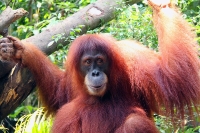
Singapore Zoo
The Singapore Zoo offers an extraordinary encounter with the animal kingdom, where more than 2,500 animals live in habitats carefully designed to reflect their natural environments…
Singapore Zoo
The Singapore Zoo offers an extraordinary encounter with the animal kingdom, where more than 2,500 animals live in habitats carefully designed to reflect their natural environments, from dense rainforests to open savannahs. Through immersive exhibits, engaging animal presentations, and family-focused activities in KidzWorld, the zoo invites a deeper appreciation of the natural world. As evening falls, the experience continues at the Night Safari, the world's first nocturnal wildlife park. Visitors can explore softly lit trails or journey by tram through moonlit landscapes, observing nocturnal animals in their element. It's a rare and unforgettable glimpse into the rhythms of the wild.
Website www.mandai.com/en/singapore-zoo.html
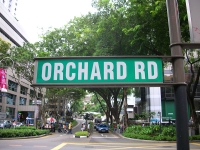
Orchard Road
Orchard Road is the vibrant heart of Singapore's shopping and entertainment scene. Stretching about 1.5 miles (2.5 kilometres), this iconic boulevard draws locals and visitors alik…
Orchard Road
Orchard Road is the vibrant heart of Singapore's shopping and entertainment scene. Stretching about 1.5 miles (2.5 kilometres), this iconic boulevard draws locals and visitors alike with its dazzling mix of luxury malls, bustling department stores and chic boutiques. At one end lies The Istana, the president's official residence; at the other, the tranquil Botanic Gardens. Along the way, must-visits such as Tangs, ION Orchard and Tanglin Mall offer world-class retail and international dining. Whether browsing designer labels or sampling hawker-style delights, Orchard Road promises an unforgettable experience, and it's well worth saving suitcase space for.
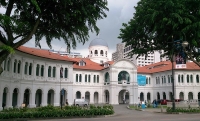
Singapore Art Museum
Housed in a beautifully restored former school on Bras Basah Road, the Singapore Art Museum (SAM) is a vibrant space dedicated to Southeast Asian contemporary art. Though the main …
Singapore Art Museum
Housed in a beautifully restored former school on Bras Basah Road, the Singapore Art Museum (SAM) is a vibrant space dedicated to Southeast Asian contemporary art. Though the main building is currently closed for an exciting revamp, SAM continues to host thought-provoking exhibitions at its Queen Street space. The museum is known for its ever-changing shows, kid-friendly activities and engaging guided tours in English, Japanese and Mandarin. When fully open, it's also home to a cosy café and a design-lover's dream shop.
Website www.singaporeartmuseum.sg
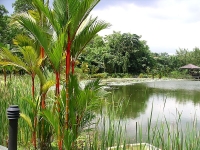
Singapore Botanic Gardens
Located near Singapore's city centre, the Botanic Gardens span 82 hectares of rainforest and beautifully designed gardens, offering a peaceful retreat in the heart of the city. A U…
Singapore Botanic Gardens
Located near Singapore's city centre, the Botanic Gardens span 82 hectares of rainforest and beautifully designed gardens, offering a peaceful retreat in the heart of the city. A UNESCO World Heritage Site, the grounds feature the renowned National Orchid Garden, showcasing over 1,000 species and 2,000 hybrids. Early mornings see joggers and tai chi enthusiasts enjoying the serenity, while families gravitate to the Jacob Ballas Children's Garden, complete with treehouses, a maze and interactive exhibits. Outdoor concerts at Symphony Lake and charming cafés enhance the experience. Loved by both locals and tourists, the gardens are a vibrant blend of nature and culture.
Website www.nparks.gov.sg/SBG
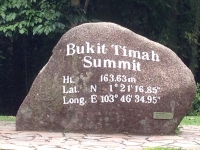
Bukit Timah Nature Reserve
Tucked just 12 kilometres from Singapore's bustling city centre, Bukit Timah Nature Reserve offers a rare and refreshing chance to step into a world of untouched rainforest. Spanni…
Bukit Timah Nature Reserve
Tucked just 12 kilometres from Singapore's bustling city centre, Bukit Timah Nature Reserve offers a rare and refreshing chance to step into a world of untouched rainforest. Spanning 163 hectares, the reserve shelters a rich variety of wildlife, including flying lemurs, long-tailed macaques, and an abundance of tropical plant life. Its well-maintained trails cater to all fitness levels, from easy-going walks to more challenging hikes that lead to the summit of Bukit Timah Hill, the highest point in Singapore. While the main path is popular, the quieter side trails often offer the most rewarding views. Early mornings are best for cooler temperatures, and visitors are advised to avoid the park during stormy weather for safety.
Website www.nparks.gov.sg/visit/parks/park-detail/bukit-timah-nature-reserve
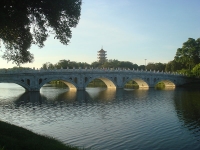
Chinese and Japanese Gardens
Nestled away from the city's bustle, Singapore's Chinese and Japanese Gardens offer a peaceful retreat rich in beauty and tradition. Spanning 13 hectares, the Chinese Garden featur…
Chinese and Japanese Gardens
Nestled away from the city's bustle, Singapore's Chinese and Japanese Gardens offer a peaceful retreat rich in beauty and tradition. Spanning 13 hectares, the Chinese Garden features architecture inspired by the Imperial Sung Dynasty, complete with a grand 13-storey pagoda and one of the largest bonsai collections outside China. Just across the way, the Japanese Garden embraces the quiet elegance of Zen design, with serene rock gardens, graceful bridges, and restful pavilions. The contrast between the two is both striking and harmonious. Wildlife is plentiful, and while drinks are available, visitors are encouraged to bring a picnic and linger.
Website www.nparks.gov.sg/juronglakegardens/explore-our-gardens/attractions/japanese-garden
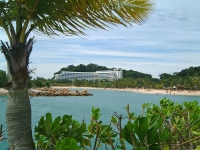
Sentosa Island
Sentosa Island is one of Singapore's most beloved destinations, drawing millions each year with its blend of nature, history and leisure. Easily reached by cable car, monorail, or …
Sentosa Island
Sentosa Island is one of Singapore's most beloved destinations, drawing millions each year with its blend of nature, history and leisure. Easily reached by cable car, monorail, or causeway, the island offers sunny beaches, lush gardens and a wide range of attractions. Highlights include the historic Fort Siloso, now a national monument, and the newly expanded Singapore Oceanarium. Visitors can stroll through sensory gardens, explore Universal Studios' new Minion Land or simply unwind by the sea. With new hotels and waterfront spaces on the horizon, Sentosa continues to evolve while holding onto its unique island charm.
Website www.sentosa.com.sg/
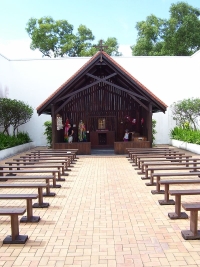
Changi Museum
During World War II, Changi Prison in Singapore held thousands of Allied prisoners of war who endured brutal conditions under Japanese captivity. The Japanese Occupation lasted thr…
Changi Museum
During World War II, Changi Prison in Singapore held thousands of Allied prisoners of war who endured brutal conditions under Japanese captivity. The Japanese Occupation lasted three and a half years, leaving a deep and painful legacy. Today, the prison remains in use and is the site of executions for serious drug offenses. Nearby, the Changi Chapel and Museum honours those who suffered, with displays of letters, drawings and personal objects. A recreated mural by British POW Stanley Warren offers a quiet reflection of hope. Visitors are encouraged to take their time, with at least two hours recommended to explore fully.
Website www.changimuseum.sg
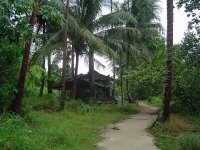
Pulau Ubin
Pulau Ubin, Singapore's second-largest offshore island, offers a peaceful escape from the city's fast pace. A short bumboat ride from Changi Point Ferry Terminal takes visitors to …
Pulau Ubin
Pulau Ubin, Singapore's second-largest offshore island, offers a peaceful escape from the city's fast pace. A short bumboat ride from Changi Point Ferry Terminal takes visitors to Ubin Village, where traditional Malay houses on stilts sit above sand and mangrove. The island, once a mining hub for granite, is now home to lush forests, tranquil lakes and pristine beaches. Visitors can explore by bike or hike along trails that wind through diverse ecosystems, including the Chek Jawa Wetlands. With only a few dozen residents left, Pulau Ubin retains a nostalgic charm, offering a glimpse into Singapore's past and a slower, simpler way of life.
Haw Par Villa
Haw Par Villa lies along Pasir Panjang Road in Singapore, and is a surreal theme park filled with over a thousand statues and 150 dioramas inspired by Chinese mythology and folklor…
Haw Par Villa
Haw Par Villa lies along Pasir Panjang Road in Singapore, and is a surreal theme park filled with over a thousand statues and 150 dioramas inspired by Chinese mythology and folklore. Built in 1937 by the Aw brothers of Tiger Balm fame, the park blends the educational with the eccentric. Its most famous feature is the Ten Courts of Hell, a graphic exhibit best avoided by the faint-hearted. Elsewhere, mythical creatures and zodiac animals create a dreamlike setting. Though parts of the park show their age, its curious charm and vivid storytelling continue to fascinate visitors drawn to the unusual.
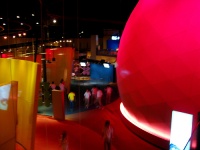
Singapore Discovery Centre
The Singapore Discovery Centre is a fun and engaging destination for families, offering a range of interactive exhibits that bring Singapore's past, present and future to life. Vis…
Singapore Discovery Centre
The Singapore Discovery Centre is a fun and engaging destination for families, offering a range of interactive exhibits that bring Singapore's past, present and future to life. Visitors can explore everything from immersive 4D experiences to hands-on activities such as military simulations and digital dance studios. The centre invites young minds to think about important topics such as national security, crisis management and entrepreneurship through playful yet educational exhibits. Families can also enjoy seasonal events, glamping experiences and local cuisine at the café. With something for everyone, it's the perfect spot for a day of learning and fun.
Website www.sdc.com.sg
Thian Hock Keng Temple
Thian Hock Keng Temple, completed in 1842, is the oldest and most significant Hokkien temple in Singapore. Built without nails, it showcases traditional Southern Chinese architectu…
Thian Hock Keng Temple
Thian Hock Keng Temple, completed in 1842, is the oldest and most significant Hokkien temple in Singapore. Built without nails, it showcases traditional Southern Chinese architecture and was originally located near the waterfront, before land reclamation changed the area. Dedicated to Mazu, the Taoist goddess of the sea, the temple was a place of gratitude for safe journeys. Visitors can admire its detailed woodwork, tranquil courtyards and statues, and the pagoda behind the temple offers a peaceful spot to relax. Unlike busier attractions, the temple offers a calm, reflective space for those seeking a quieter, more contemplative experience.
Website www.thianhockkeng.com.sg
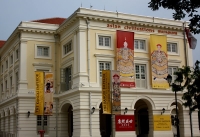
Asian Civilisations Museum
The Asian Civilisations Museum is a leading cultural destination, offering a comprehensive collection that spans 5,000 years of Asian history. Its exhibits cover Chinese, Islamic a…
Asian Civilisations Museum
The Asian Civilisations Museum is a leading cultural destination, offering a comprehensive collection that spans 5,000 years of Asian history. Its exhibits cover Chinese, Islamic and South Indian cultures, showcasing artefacts such as jade, porcelain and fine arts. The museum's permanent and temporary exhibitions offer valuable insights into trade and cultural exchanges. Audio guides and free guided tours are available, with half-price tickets on Friday nights; a gift shop and a restaurant provide opportunities to relax after a visit. For a quieter experience, weekday mornings are the best time to explore the museum's offerings.
Website www.acm.org.sg
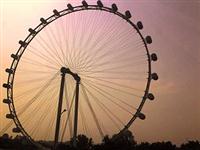
Singapore Flyer
The Singapore Flyer is one of the tallest Ferris wheels in the world, standing at 541 feet (165 meters), offering breath-taking views of the city's skyline. Visitors can spot landm…
Singapore Flyer
The Singapore Flyer is one of the tallest Ferris wheels in the world, standing at 541 feet (165 meters), offering breath-taking views of the city's skyline. Visitors can spot landmarks such as Marina Bay, Raffles Place and Merlion Park, with clear skies extending views to the Indonesian islands of Batam and Bintan. By night, the city transforms into a sparkling light show. The Flyer's terminal also includes shops, restaurants and family-friendly attractions such as flight simulators. For a special experience, visitors can enjoy cocktails, a four-course meal or even hold their wedding while surrounded by the stunning city panorama.
Website www.singaporeflyer.com
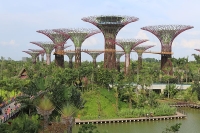
Gardens by the Bay
Gardens by the Bay lies in Singapore's Marina Bay area, and is a breath-taking urban oasis that aims to transform the city into a 'City in a Garden'. Its iconic Supertrees, reachin…
Gardens by the Bay
Gardens by the Bay lies in Singapore's Marina Bay area, and is a breath-taking urban oasis that aims to transform the city into a 'City in a Garden'. Its iconic Supertrees, reaching up to 50 meters, harness solar energy and manage rainwater, contributing to the Gardens' sustainability. Visitors can explore themed gardens filled with orchids and other exotic plants. The Cloud Forest, featuring the world's tallest indoor waterfall, is another highlight; the vast lawn hosts outdoor events, and the Gardens are home to numerous restaurants offering stunning views. A perfect blend of nature, technology and relaxation, it's a must-see in Singapore.
Website www.gardensbythebay.com.sg/en/home.html
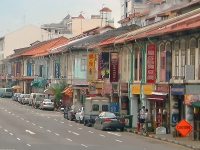
Geylang
Geylang offers a striking contrast to Singapore's more modernised neighbourhoods, with its lively atmosphere filled with neon-lit shop-houses, bustling street markets and karaoke b…
Geylang
Geylang offers a striking contrast to Singapore's more modernised neighbourhoods, with its lively atmosphere filled with neon-lit shop-houses, bustling street markets and karaoke bars. The Geylang Serai Market, a traditional wet market with fresh produce and hanging meats, adds to the area's old-world charm. At night, Geylang takes on a different character, becoming known for its gritty edge as Singapore's red-light district. It's a favourite among backpackers, thanks to its affordable accommodations, and a vibrant nightlife scene where visitors can enjoy a good time without breaking the bank.
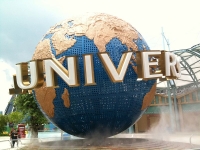
Universal Studios Singapore
Universal Studios Singapore, located on Sentosa Island, is a must-visit destination for families, offering a thrilling experience in seven distinct zones: Hollywood, New York, Anci…
Universal Studios Singapore
Universal Studios Singapore, located on Sentosa Island, is a must-visit destination for families, offering a thrilling experience in seven distinct zones: Hollywood, New York, Ancient Egypt, Lost World, Madagascar, Far Far Away and Sci-Fi City. Popular rides include the Battlestar Galactica roller coasters, Revenge of the Mummy, and Jurassic Park Rapids Adventure, along with 3D theatres and live performances. The park also features numerous dining options, cafes and official merchandise. With high-tech attractions and immersive experiences, Universal Studios Singapore offers a fun-filled day for visitors of all ages, making it a standout entertainment hub on the island.
Website www.rwsentosa.com/en/attractions/universal-studios-singapore/explore



